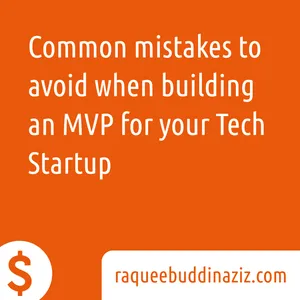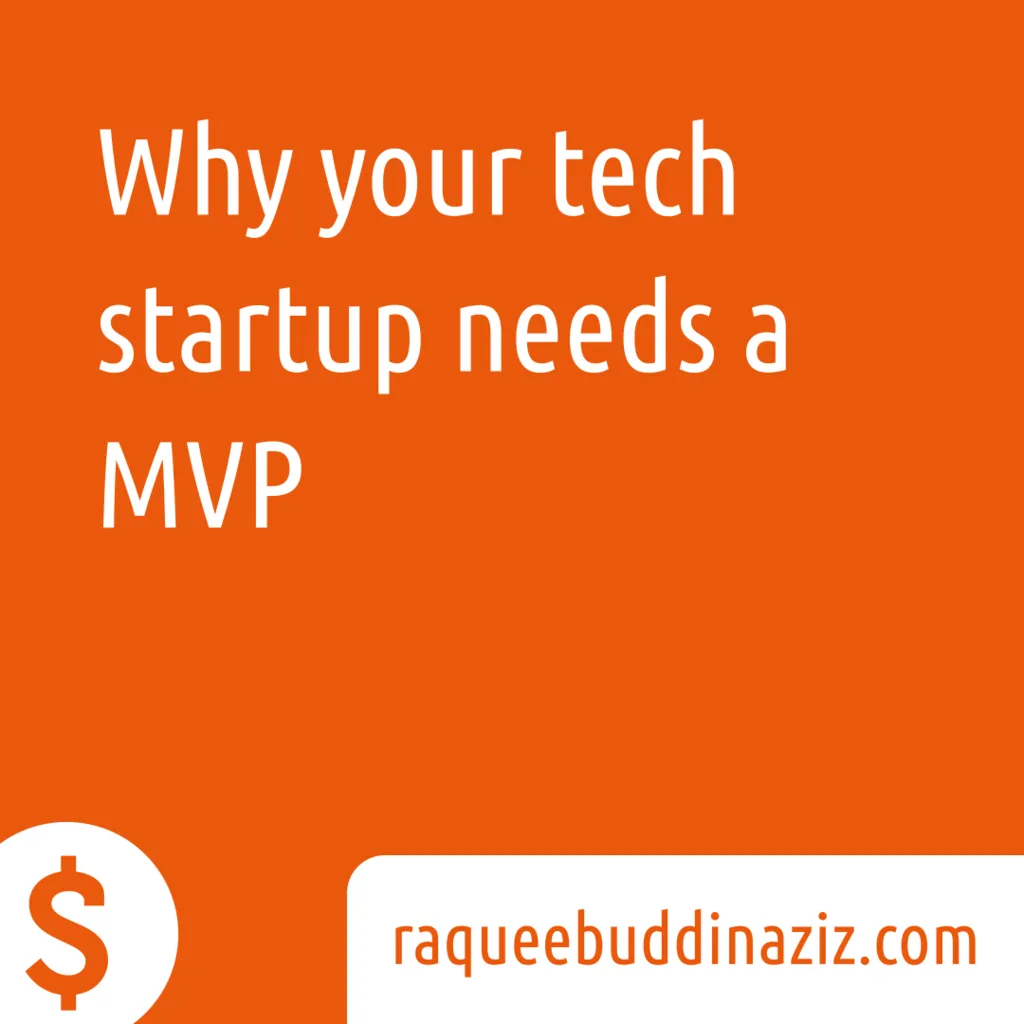By
Raqueebuddin Aziz
January 24, 2024
Freelance Web Designer & Developer

By
January 24, 2024
Freelance Web Designer & Developer
Let’s look into some of the common mistakes that startups make when building an MVP.
I highly recommend reading Why your tech startup needs an MVP before diving into this article.
This is a common mistake I see startup founders make, they treat their MVP as the final product, and end up spending a fortune on it by paying for the best database services, the best CDNs, hiring overly large dev teams, building android, iOS, web, and desktop apps all at once before even validating their startup idea.
Remember the goal of an MVP is to build the bare minimum product to get early user feedback and test business assumptions and validate your startup idea.
Build as much as you need to solve the core problem of your customers and nothing more until you start getting feedback from early testers of the MVP.
You don’t need to worry about infinite scalability at this stage, the fastest time to load your application, or the most beautiful user interfaces. These can come when you are building the final product using the knowledge you learned from the MVP and user feedback.
These may seem like small things to implement, and you might think why not just do it, but these are some of the hardest and most expensive problems to tackle and not worth it till you have validated your startup idea by means of an MVP.
Otherwise, what you end up with is an infinite scalable, fast and beautiful app that no one wants to pay for.
This is a fatal one since it defeats the whole purpose of an MVP. You need to aggressively process user feedback, make decisions based on them and relay that to your dev team.
There is no point in building an MVP if you don’t act on the feedback you get from it.
This is a sneaky one, founders might think they know the goal of their MVP aka validate the startup idea. And while that is true it’s not specific enough.
You need to define a clear and measurable goal for your MVP. It can be a customer feedback score on a scale of 1-10, or it can be active users in the next six months, or it can be revenue generated per month.
The goal of your MVP needs to be something tangible with a clear number associated with it, so you leave no room for ambiguity and subjectivity when evaluating the success of your startup idea.
There you have it some of the most common mistakes I see startup founders make with their MVPs. Now you are primed and informed to not make them and what it would cost if you did.
Leave a comment down below if this helped you or if you have a common pitfall of yours to share

 From Idea to MVP: A Step-by-Step Guide for Tech Startup Founders
From Idea to MVP: A Step-by-Step Guide for Tech Startup Founders © 2025 Raqueebuddin Aziz. All rights reserved.